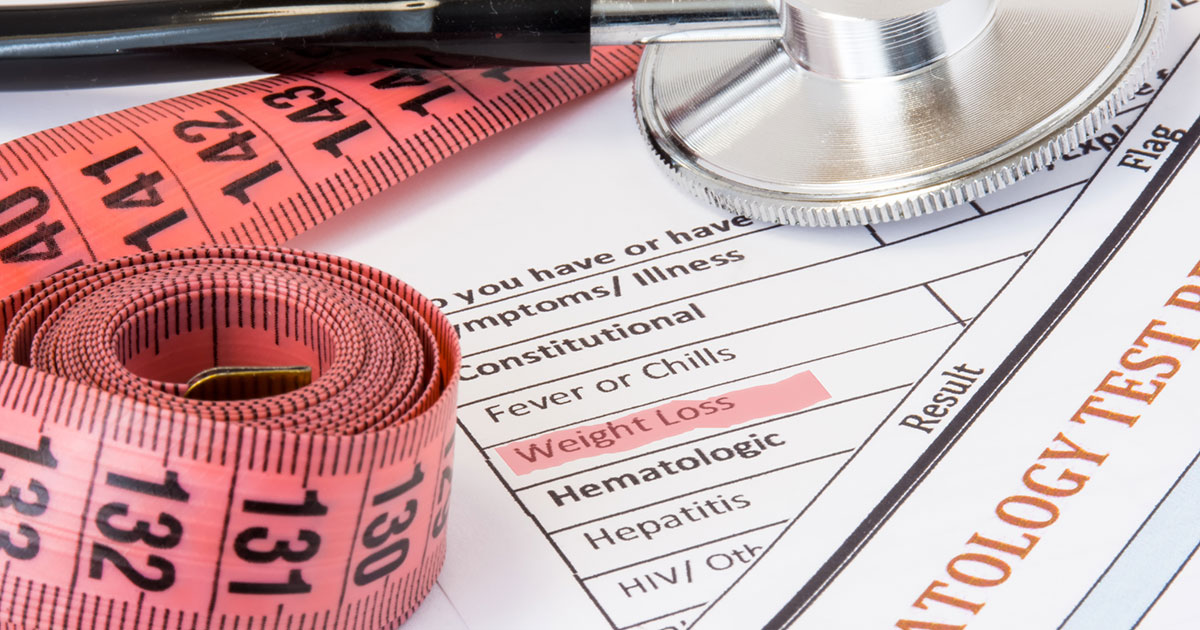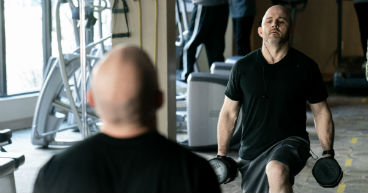
Your muscles may play a bigger role than you think when it comes to overcoming a cancer diagnosis or dealing with the side effects of cancer treatment.
Research shows that having good muscle mass may improve your cancer prognosis, while helping you withstand some side effects of cancer treatments. Even if you don’t begin muscle-building exercises until after you’ve been diagnosed, exercise may still be the most recommended treatment for cancer cachexia, a muscle-wasting disease for which there is no approved treatment drug in the United States. Cachexia (pronounced kuh-KEK-see-uh) affects up to 80 percent of cancer patients to some degree and is responsible for up to 30 percent of all cancer-related deaths, a National Cancer Institute (NCI) report says. Those deaths are “often because of heart or respiratory failure related to muscle loss,” it says.
Your body’s ability to maintain muscle mass during cancer treatment is affected by a variety of issues. You may experience general weakness from having cancer and have some treatment side effects—nausea, vomiting, fatigue and pain, for instance—that may impede your normal ability to maintain lean muscles. Muscle loss may also be due to the disease itself. Exercise may counter some of that muscle loss and lessen the intensity of treatment side effects.
“Increased physical activity can reduce treatment-related toxicity by enhancing blood flow, blood sugar regulation, release of endorphins, etc.,” says Mirela Holtz, Board-Certified Specialist in Oncologic Physical Therapy at City of Hope® Cancer Center Phoenix. “Physical activity has been shown to [have] systemic anti-inflammatory effects in the body, while conventional cancer care causes inflammation in the body.”
Some cancers and cancer treatments eat away at the body’s musculature and may prevent your body from building muscle mass—something that can’t be reversed simply by exercising more. But even then, exercise may offer benefits.
“When a patient has a cancer that prevents increasing muscle mass, we focus on exercises to help maintain the muscle mass that they have,” says Meredith Boudreau, Rehabilitation Manager and Physical Therapist at City of Hope Cancer Center Chicago. “We focus on helping to maintain functional mobility and physical activity.”
Researchers are studying how cancer cachexia takes place in the body and hope to develop drugs that will counteract the muscle wasting. Studies are also looking for ways to better diagnose the condition, which mimics the side effects of many cancers and cancer treatments.
In this article, we will examine:
- Loss of muscle mass due to cancer
- Cancer cachexia therapies under investigation
- Strength training and cancer
- Building muscle after cancer treatment
If you’ve been diagnosed with cancer and are interested in a second opinion on your diagnosis and treatment plan, call us or chat online with a member of our team.
Loss of muscle mass due to cancer
Muscle cells produce nutrients as they break down proteins. Cancer may take advantage of this normal process—called autophagy—which releases substances used for cellular energy production, to promote cancer cell growth.
Cancer and cancer treatments cause inflammation—one of the body’s normal infection-fighting strategies—that may promote cachexia by altering a patient’s metabolism. The result: muscle and fat cells break down faster than they can be replenished.
Another part of the body’s inflammatory response involves chemical messengers called cytokines, which are protein molecules that stimulate immune system cells and tell them what to do. The cytokines in affected cancer patients may cause skeletal muscles to wither, a condition called sarcopenia, or suppress a patient’s appetite, called anorexia, according to the NCI.
“Chemotherapy has been shown to cause skeletal muscle atrophy or muscle wasting,” Holtz says. “It is possible to gain muscle mass, but this is very dependent on prior level of function, activity levels and motivation levels.”
Cancer cachexia therapies under investigation
A study published in May 2023 in the Journal of Hematology & Oncology says, “Cancer cachexia treatment should involve not only pharmacological therapy but also multiple interventions, such as nutritional treatment, exercise and psychosocial interventions.”
Exercise is the only recommended behavioral treatment for cancer cachexia, says the study by researchers in Korea and Singapore. “Exercise is considered beneficial in decreasing protein degradation, which reduces various types of atrophy and improves skeletal muscle function,” it says.
Other treatments identified in the study include:
- Nutrition and appetite stimulants that may lead to increased body weight
- Anti-inflammatory drugs to inhibit muscle decay
- Protein synthesis stimulants that encourage protein production, which promotes muscle development
- Anti-catabolic agents that slow down the breakdown of muscle tissue
Strength training and cancer
Given the many areas where more research is needed, exercise may be the most significant therapy available now for patients with cancer cachexia, those wanting to head off the possibility of getting it or those dealing with similar muscle-related side effects.
“There is evidence to support that progressive resistance training will increase lean muscle and thus muscle strength. Evidence shows that it can be done and found to be beneficial during and after a patient’s treatment,” Holtz says. “Strength training during a patient’s cancer journey may allow them to tolerate the treatment much better.”
Holtz cautioned about using supplements such as creatine, which she says needs more research related to cachexia and, if used, should be paired with a resistance training exercise program. She says dieticians stress that creatine or other similar supplements should only be used after first consulting with your doctor–and not at all if you have renal or hepatic dysfunction, or high blood pressure.
What should an exercise program look like?
“A well-rounded exercise program is always best, including strength training, aerobic exercise and stretching. However, depending on specific conditions or symptoms, each program needs to be individually tailored to each patient,” Boudreau says.
Strength training, or resistance training, may increase muscle mass and help improve balance, reduce fatigue, and make it easier to do daily activities, the American Society of Clinical Oncology (ASCO) says. A program may use hand weights, exercise machines, resistance bands or just the weight of the patient’s body (through pushups or chin-ups, for instance), it says.
“Progressive strength training will increase lean muscle mass and overall strength, providing benefit to daily functional tasks such as walking, cleaning, cooking, and tolerance for recreational activities,” Holtz says.
ASCO recommends that cancer patients doing strength training:
- Start slowly, even if you’re used to being active.
- Exercise in a safe environment, where exposure to germs is minimized, such as at home or outdoors, and where you have protection from falls.
- Pay attention to your body and don’t try to do too much.
- Drink plenty of water and eat a nutritious diet.
- See your doctor regularly.
“The average person should be exercising at a moderate intensity several times per week,” Holtz says. “A patient with cancer should also be exercising regularly to obtain the benefits of exercise and to minimize side effects, like muscle loss.”
Also worth noting: exercise may reduce the risk of developing cancer in the first place. Being obese and sedentary are known cancer risk factors. Exercise improves the immune system, lowers levels of insulin and estrogen, known to feed certain cancers, helps reduce body weight and may lead to better sleep.
Building muscle after cancer treatment
Developing an exercise routine may be beneficial no matter where you are on your cancer journey.
“Prior to the start of cancer care, a strength training program will improve muscle strength,” Holtz says. “During cancer care, a strength training program will help to maintain muscle strength. A program during survivorship may help decrease the risk of cancer recurrence and improve a patient’s quality of life after cancer.”
Holtz says the goal of rehabilitation therapy is to fit a person’s needs and lifestyle.
“We want to equip the patient with the knowledge of what they can do for themselves and motivate them to seek that greater quality of life,” Holtz says.
Holtz and Boudreau say cancer patients shouldn’t shy away from exercise—and instead try to do it correctly.
“Each patient and diagnosis or treatment is different, but for most it is possible that with proper exercise—in an individually tailored program—and the proper nutrition, patients are able to build muscle mass after cancer treatments,” Boudreau says.
If you’ve been diagnosed with cancer and are interested in a second opinion on your diagnosis and treatment plan, call us or chat online with a member of our team.



